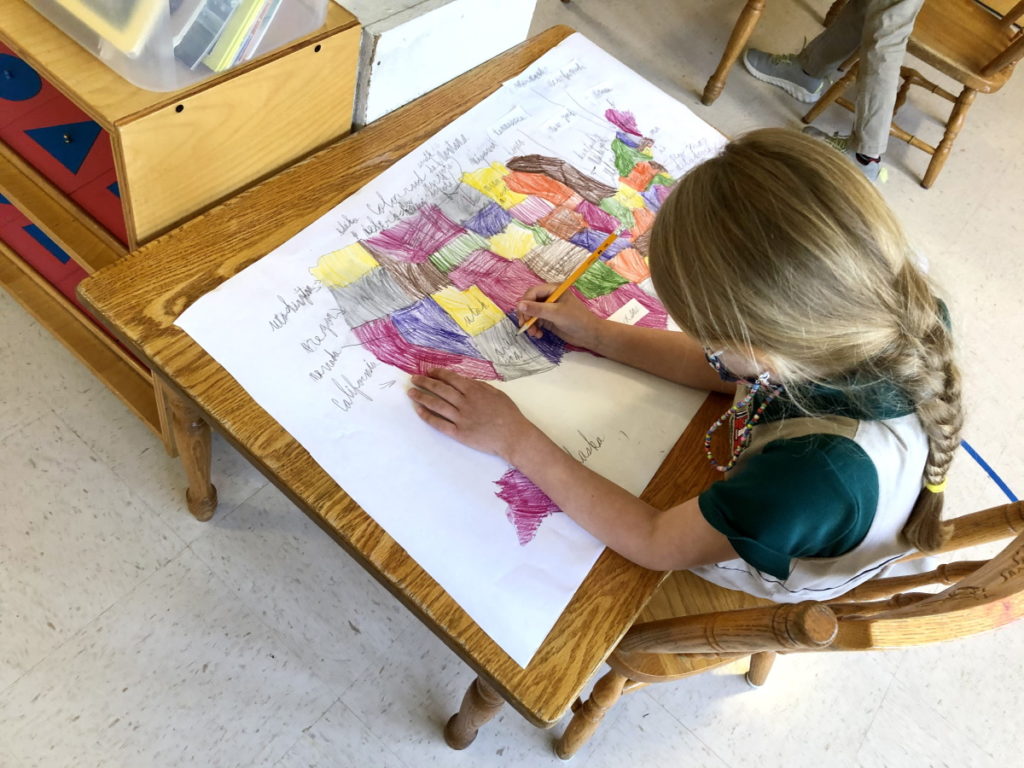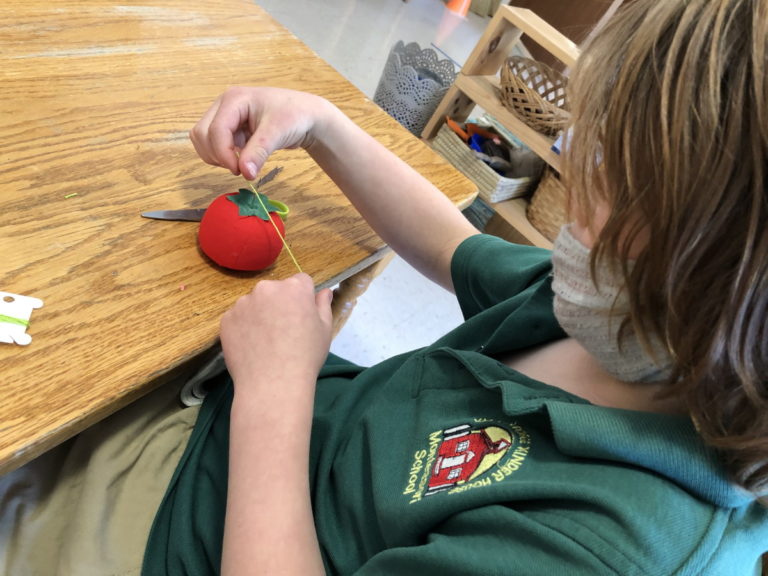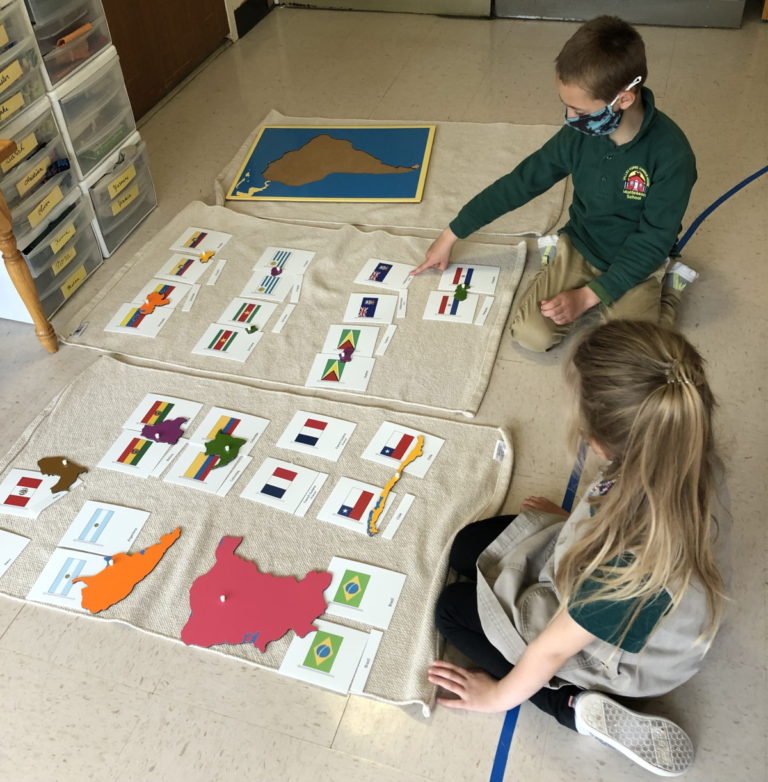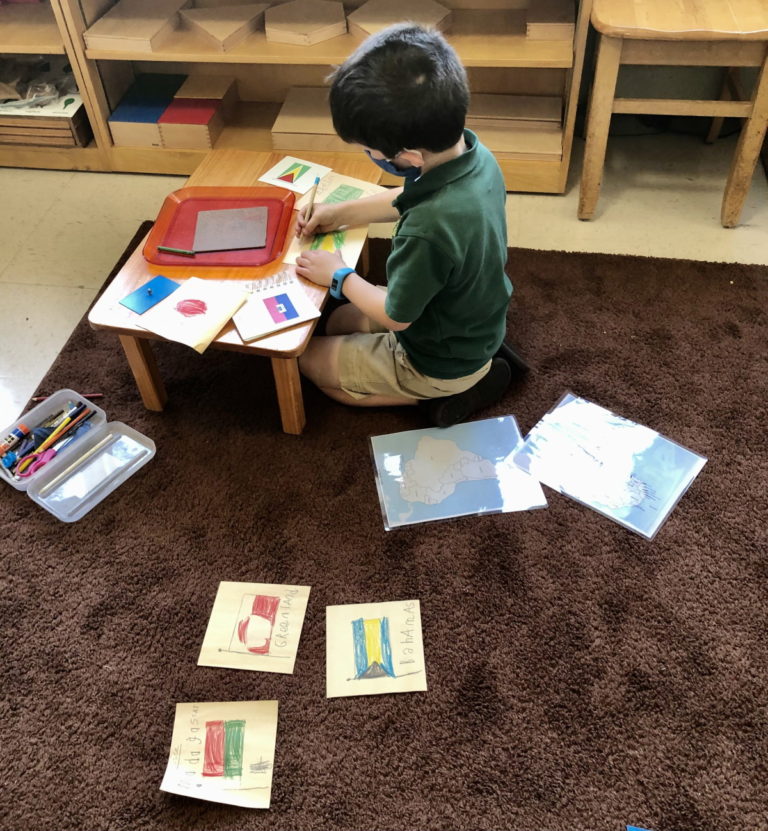In the Montessori environment, children have a chance to analyze, infer, and enlarge their field of perception through sensorial experiences. All the materials have order—from simple to complex and from basic and general to more specific and detailed qualities—resulting in higher and more critical consciousness, more acute perception, higher sensitivity to creativity, and imagination.
Practical Activities to Develop Logical Minds
Children experience the isolation of quality (isolating 1 quality/attribute per material). The isolation of quality helps children to build internal order and abstraction. Through the isolation of quality, children are able to enlarge their field of perception and then explore and link it to external world experiences. Therefore, creativity and imagination are developed from real, practical activities as the groundwork, not fantasy activities. Through practical activities, children use their senses to develop their logical minds.
“Sensorial materials are like a magnifying glass that magnifies each impression and perception, then builds the connection to the new world with greater details and information as the foundation of the child’s intellect.”
– Dr. Maria Montessori.
When the children are around 2 ½ years old and after they have experienced the rough and smooth board and the color tablet 2 (isolation of one quality: the tactile and visual senses) then they experience the sandpaper globe where they learn rough represents land and smooth represents water. Next, the children learn the painted globe where the blue represents oceans and the colorful areas represent the continents.
World Puzzle Map
From the globe, sensorially the children learn the names of the continents on the world puzzle map. Here we see the learning process from the isolation of a specific quality to the enlargement of perception and then abstraction which the children then apply to the world around them. Linking the animals and famous landmarks to each continent the children experience exploration and deepen their knowledge by exploring these topics for each continent.
This month, after learning the names of countries from each continent, they put the continents together. They also put each famous miniature landmark on their country of origin and learned the flag of each country based on each continent. Children use a moveable alphabet to sound the name of each country and then make handwriting labels. They drew flags from countries around the world and wrote the name of the country.
When children are surrounded by an environment that is filled with practical activities, we see discoveries, exploration, imagination, and creativity. Let’s fill our children’s environment and days with practical activities anytime, anywhere.



